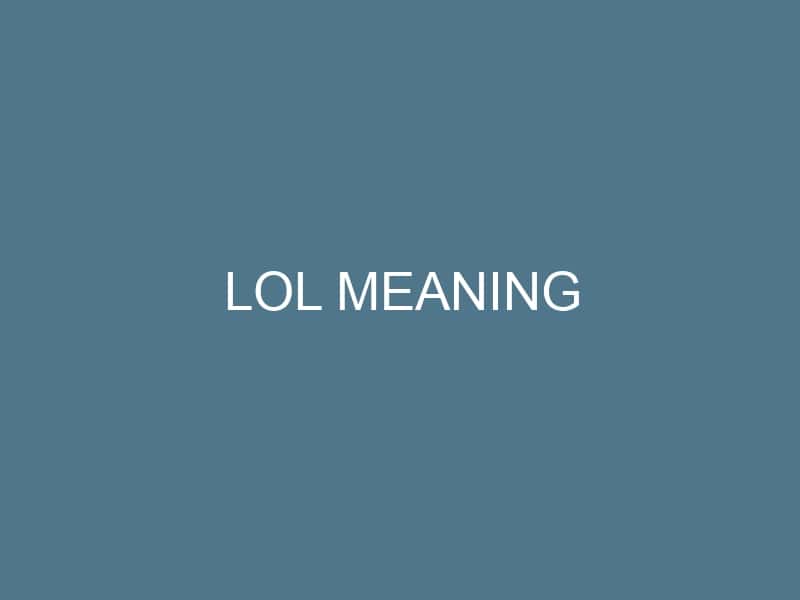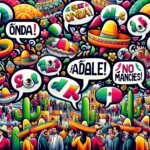The internet has spawned its own language, and “LOL” might be one of the most ubiquitous terms to arise from the digital revolution. Standing for “laugh out loud,” LOL has evolved from a mere acronym to a universal signal of humor and lightheartedness. Originating in the 1980s within early chat rooms and message boards, the term quickly established itself as a staple in the ever-growing repertoire of digital communication. Today, its usage spans generations and digital platforms, maintaining its status despite the ever-changing internet landscape.
Key Points:
- Originated in the 1980s
- A universal symbol in digital communication
Unraveling the Meaning of LOL in the Digital Era
| Section | Key Takeaways |
|---|---|
| Introduction to LOL | LOL originated in the 1980s and has become a universal symbol in digital communication. |
| The Evolution of Internet Slang | Internet slang has transitioned from full phrases to acronyms, matching the shift from phone calls to instant messaging. |
| Understanding LOL in Context | LOL comes with variations such as ROFL and LMAO, and users need to be mindful of the appropriateness of these acronyms in context. |
| Beyond LOL: Exploring Other Popular Abbreviations | The digital era has brought a plethora of abbreviations like BTC and TYT, enriching and complicating digital communication. |
| Internet Slang for Expressing Emotions | Slang is used to express emotions; for example, FR for sincerity and IMU for affection. |
| Modern Slang and Viral Trends | Slang like FYP can affect content virality, while GRWM reflects blending of personal and performative content online. |
| Slang as a Cultural Identifier | Internet slang can symbolize group identity, seen with BFFR among friends and IKYFL resonating with the youth culture. |
| Limitations and Drawbacks of Slang | Slang has its limitations, can lead to miscommunication, and risks becoming dated or obscure, as seen with SMDH. |
| Internet Linguistics and The Future of Communication | The future of communication may see continuous evolution of digital slang influenced by AI and new platforms like WTD. |
| Conclusion: The Enduring Legacy of LOL | LOL’s legacy continues as a cultural symbol, demonstrating linguistic creativity and adaptability in digital communication. |
The Evolution of Internet Slang
Slang has always been a byproduct of human interaction, and the digital world is no exception. The evolution of internet slang exemplifies the adaptability of language, with acronyms and shorthand becoming a common method of expressing thoughts quickly and efficiently online. As communication shifted from in-person and landline conversations to instant messages and texts, the internet lexicon adapted, favoring brevity over verbosity.
Major Transitions:
- From full phrases to acronyms
- From phone calls to instant messages
Embracing Abbreviated Communication
Understanding LOL in Context
LOL has birthed a family of related acronyms, each sprouting to convey varying degrees and styles of laughter. “ROFL” (rolling on the floor laughing) and “LMAO” (laughing my ass off) are just a couple of examples that magnify the intensity of the humor being expressed. Yet, as these terms become conventional, nuances in digital conversations can sometimes lead to misunderstandings, putting the onus on the user to gauge the appropriateness of their internet-speak within the given context.
Variations of LOL:
- ROFL: More intense laughter
- LMAO: An expression of extreme amusement
Different Flavors of Laughter Online
Beyond LOL: Exploring Other Popular Abbreviations
The digital era has marked the advent of countless abbreviations, evolving into a comprehensive shorthand that sometimes feels like a language within a language. As the internet exploded into the mainstream, niche communities and popular platforms introduced and popularized their own jargons. For instance, exploring the BTC meaning can offer insights into the nuanced terms of the cryptocurrency world, while acronyms like TYT meaning (“take your time”) remind us of the importance of patience in digital communication.
Popular Internet Abbreviations:
- BTC: A leading cryptocurrency
- TYT: A considerate reminder to take one’s time
Navigating Internet Slang
Internet Slang for Expressing Emotions
Internet slang is not reserved for humor alone; it often functions as a tool for conveying sincerity and other complex emotions. Terms like FR meaning (“for real”) can add a layer of authenticity to a statement, while ISTG meaning (“I swear to God”) might express disbelief or frustration. Emotions like affection don’t miss out on this trend either, with acronyms like IMU meaning (“I miss you”) encapsulating feelings of longing or endearment in just a few keystrokes.
Emotional Expressions in Slang:
- FR: For authenticity and earnestness
- IMU: Conveying affection and longing
Emotional Shorthand: When Words Are Unsaid
Modern Slang and Viral Trends
The obsession with viral content has pushed some slang terms to the forefront of social media culture, with tags like FYP meaning (“For You Page”) dictating what ensnares our attention on platforms like TikTok. Another cultural phenomenon is the proliferation of GRWM (“Get Ready With Me”) videos, blending the personal and the performative in a format that’s become a cornerstone of online beauty and lifestyle communities.
Viral Phenomena:
- FYP: A TikTok feature driving content virality
- GRWM: A blend of personal storytelling and beauty tutorials
Catching Up with Current Slang
Slang as a Cultural Identifier
Slang, particularly online jargon, is increasingly seen as a marker of group identity. It allows individuals to foster a sense of belonging within their digital tribes, whether they be gamers, influencers, or crypto enthusiasts. For example, BFFR meaning (“Best Friends Forever Right”) emphasizes friendship in a playful way, while terms like IKYFL meaning (“I Know You’re Feeling Lazy”) resonate with the laid-back vibe of youth and internet culture.
Slang as Identity:
- BFFR: Affirming close friendships
- IKYFL: Relatable to a younger audience
The Generation Gap in Slang Usage
Limitations and Drawbacks of Slang
Despite its appeal, internet slang isn’t infallible—it can be a hotbed for miscommunication and can rapidly become obsolete. Emerging slang can isolate those not in-the-know, and what’s trendy today may be unintelligible tomorrow. Consider how SMDH meaning (“Shaking My Damn Head”) can imply a different context depending on usage and may eventually lose its relevance as language continues to evolve.
Slang Limitations:
- Potential for miscommunication
- Risk of becoming dated or obscure
The Expiry Date of Internet Slang
Internet Linguistics and The Future of Communication
As with any living language, we can expect internet slang to continue evolving. The advent of new social platforms and technological innovations perpetually gives rise to novel acronyms and phrases. With the growing influence of AI and the global connectivity of the internet, WTD meaning (“What The Duck”) could exemplify how playful and dynamic online communication can be, hinting at the endless possibilities in the realm of digital linguistics.
Looking Ahead:
- Continuous evolution of digital slang
- Influence of AI and new platforms
Shaping the Future of Digital Discourse
Conclusion: The Enduring Legacy of LOL
LOL has become more than just an acronym—it is a cultural artifact that symbolizes the adaptability and creativity of digital communication. It embodies the inherent desire to connect, expressive in its brevity, and universally understood across the digital sphere. As internet slang grows and morphs, whether we choose to embrace or resist it, LOL stands as a testament to the power of language in an ever-connected world.







